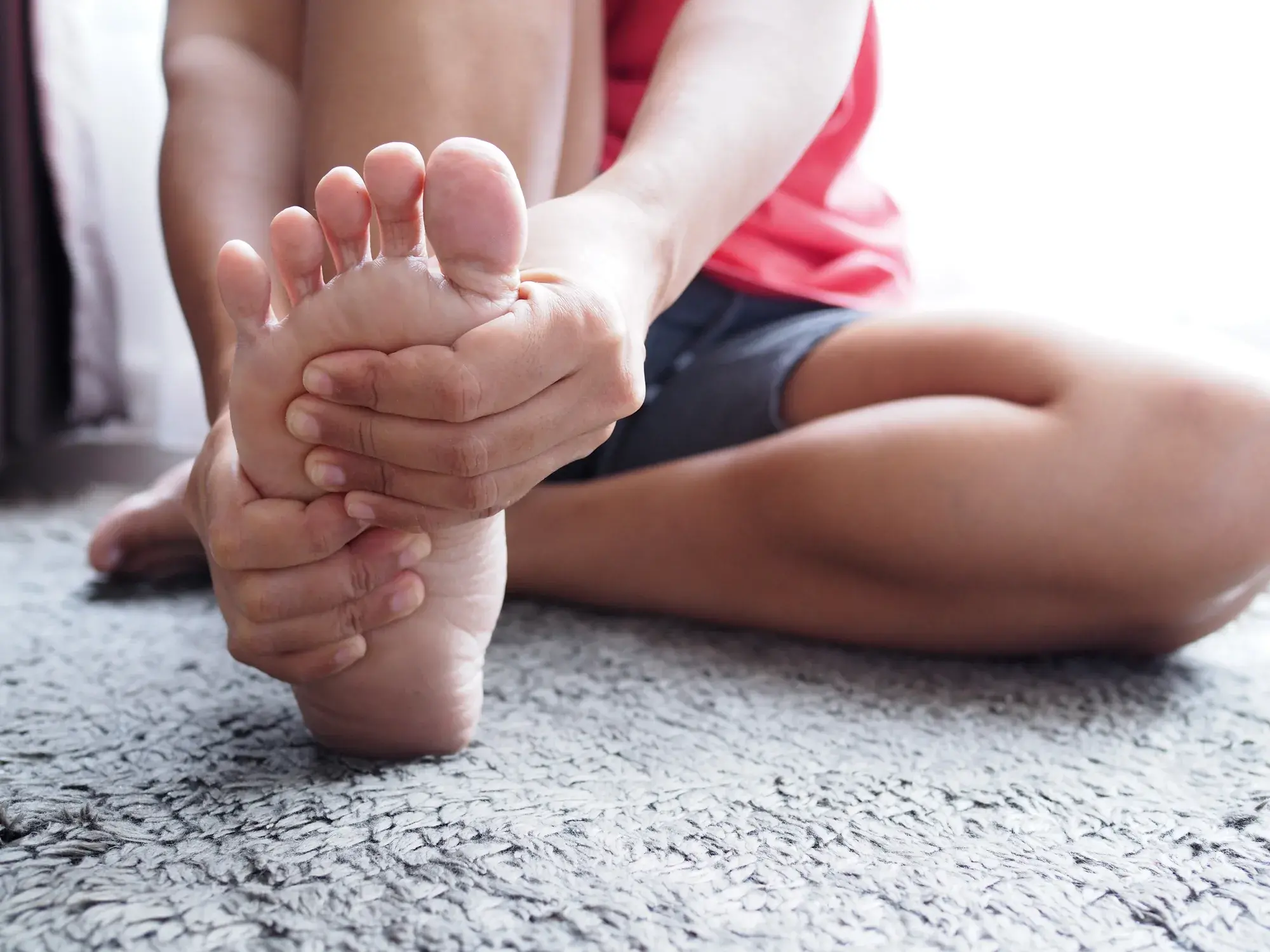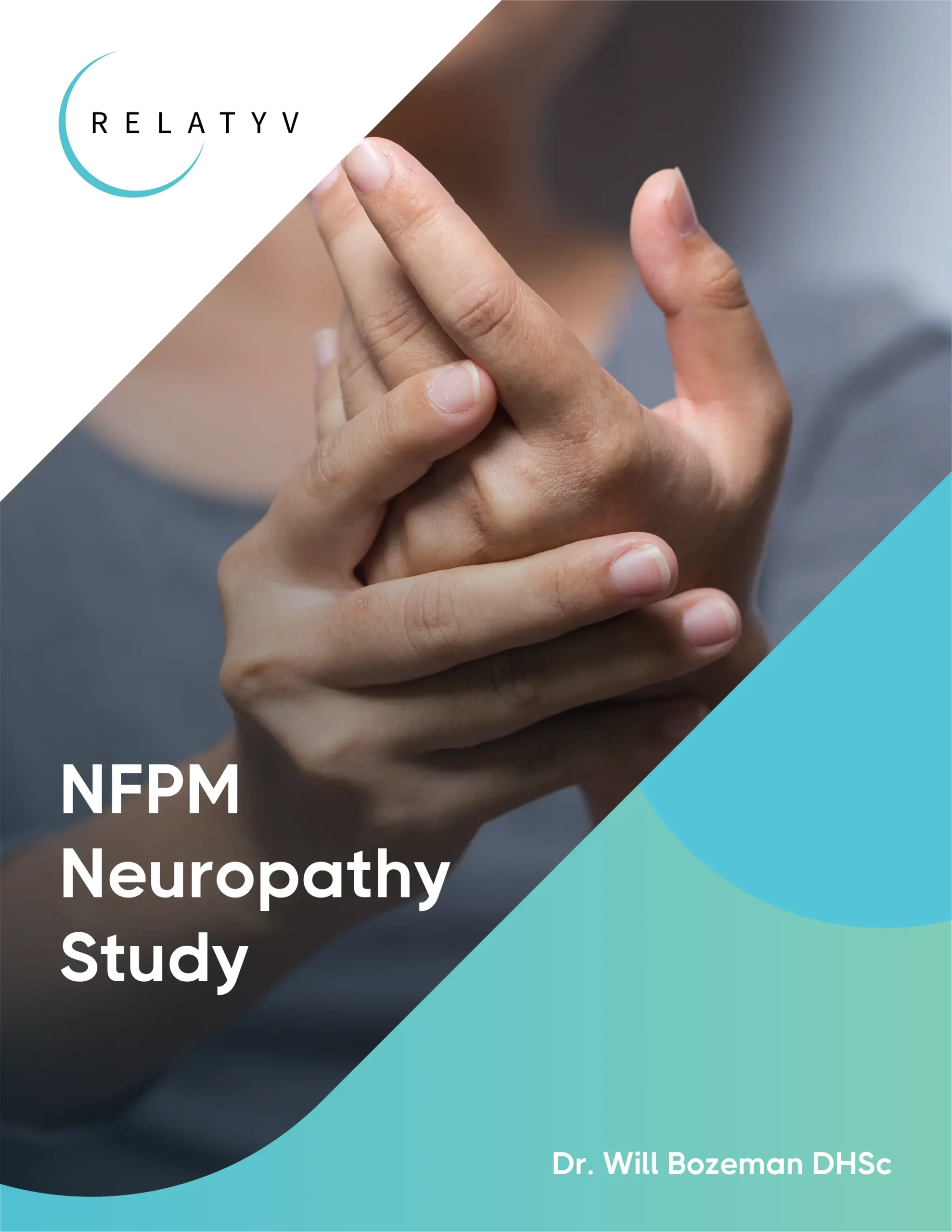Plantar Fasciitis

Does Plantar Fasciitis Cause Swelling?
Read More
November 28, 2023
Are you currently experiencing plantar fasciitis? This frustrating condition generates stabbing or aching pains along the bottom of your foot, particularly in your heel. It is a common condition that causes inflammation of the plantar fascia, the band of tissue connecting the heel bone to the toes.
While the treatment for plantar fasciitis is quite simple, consisting of rest and recovery measures, it is also difficult in that it can take several weeks to heal completely. If you do not take precautions, your plantar fasciitis will not go away on its own. Throughout your recovery, it’s important to avoid habits that may exacerbate symptoms and make the condition worse.
This comprehensive guide will explore what not to do with plantar fasciitis and highlight the common mistakes people make that can aggravate this painful condition.
Importantly, we will share some of the best exercises for managing the painful symptoms of plantar fasciitis and discover the steps you can take, including innovative therapies that can enhance the healing process.
Before we get into the beneficial pain management strategies, let’s first explore some of the worst things to do with plantar fasciitis.
Taking good care of your feet is arguably the most critical aspect of managing plantar fasciitis. Some people think that going barefoot or wearing flat shoes might help stretch out the plantar fascia, but the truth is that going barefoot can reduce stability and increase impactful shocks along the bottom of your foot, eventually exacerbating symptoms.
This is why it’s important to wear shoes if you are currently dealing with plantar fasciitis, and when choosing which shoes to wear, look for the following features:
Alongside adequate footwear, stretching is an important part of managing plantar fasciitis. Let’s have a look at why some people may take stretching exercises a bit further than required.
It’s true that stretching can be beneficial for plantar fasciitis. But this doesn’t mean aggressively stretching your feet at every chance you can get. In fact, over-stretching the plantar fascia when it is already inflamed and painful can actually cause more harm than good.
To avoid further damage to the plantar fascia, consider these tips for safer plantar fascia stretching:
By stretching appropriately, you are protecting your feet from excess strain.
High-impact activities can also put undue strain on your feet and exacerbate plantar fasciitis. To minimize discomfort, consider avoiding or modifying the following activities:
We are not suggesting that those struggling with plantar fasciitis avoid all physical activity. We’ll discuss why completely limiting all exercise might do more harm than good in the next section.
While high-impact activities can aggravate plantar fasciitis, living a completely sedentary lifestyle can also be detrimental. If all movement is completely limited, stiffness and muscle weakening can occur, causing the foot and ankle to lose strength and stability.
When moderate amounts of low-impact exercises are incorporated into your daily routine, it can help maintain good foot health and reduce the risk of further damage to the plantar fascia. Consider exercises like swimming, cycling, gentle yoga, and aquatic aerobics, which are gentle on the feet while promoting overall health.
Let’s take a deeper look into two alternative lifestyle factors that can boost your body’s healing, decrease inflammation, and play a crucial role in effectively managing plantar fasciitis.
Your diet plays a crucial role in your body’s overall health, impacting overall levels of inflammation and important healing processes. Certain foods can exacerbate inflammatory processes, which may worsen plantar fasciitis symptoms. To optimize your recovery, consider reducing or avoiding:
Carrying extra weight places added stress on your feet, potentially flattening your arches and causing foot problems, particularly for the plantar fascia. Excess weight also increases the pressure and strain on this vital ligament, impacting your overall foot health.
Maintaining a healthy weight is essential for managing and preventing plantar fasciitis. Adopting a balanced diet and engaging in regular, low-impact exercise can help you control your weight for both plantar fasciitis management and general health and well-being.
In the upcoming sections, we’ll begin sharing some helpful exercises and alternative treatment therapies that can reduce the pain and inflammation associated with plantar fasciitis, helping you on your road to recovery.
If you’re currently managing plantar fasciitis, completing a range of targeted stretches and exercises can help reduce discomfort and promote healing. Stretches aim to loosen the tight plantar fascia and calf muscles and reduce strain throughout inflamed areas.
Movement and exercises stimulate important blood flow to affected areas of the foot, which increases the availability of essential nutrients, oxygen, and healing properties that promote the repair and recovery of damaged tissues.
Furthermore, when the underlying causes of plantar fasciitis aren’t adequately addressed, this condition has a tendency to re-occur. Implementing a regular stretching and exercise routine enhances the strength and flexibility of the foot’s supporting structures.
Conditioning also serves as a valuable preventive measure, reducing the likelihood of future flare-ups and offering lasting relief.
We have carefully selected the exercises listed below, as we believe they are particularly effective at addressing the underlying muscle issues associated with plantar fasciitis.
Sitting either on the floor or in a chair, cross one ankle over the opposite leg and rest it just above the knee.
Wrap one hand over your toes while supporting your ankle with the other.
Slowly pull your toes back towards your torso. You should feel the bottom of your foot and calf gently stretching. It’s important not to pull too hard. A gentle stretch is the goal.
Hold this stretch for approximately 20 seconds, then release. Repeat this exercise two to three times for each foot, whichever feels best for you.
Stand up facing a wall and place your hands against the wall at around eye level.
Step one foot back, keeping it straight, with the heel flat on the floor.
Then slowly begin bending the front knee while maintaining the straight back leg. You can try leaning forward to feel a deeper stretch in the calf of the back leg.
Hold this stretch for around 20 seconds and repeat two or three times for each leg.
Begin with your feet hip-width apart, standing near a wall or table for support.
Moving both feet at the same time, slowly shift your body weight onto the balls of your feet and toes, raising your heels off the ground.
Hold this raised position for a maximum of four to five seconds, then slowly lower your heels back to the ground.
Start by performing eight to 10 repetitions of this exercise, and as you become more comfortable, you may progressively increase the number of repetitions.
As you settle into a chair, place a rolling object – a tennis ball, drink bottle, or rolling pin – on the ground in front of you.
Next, position the object so it is neatly held by the arch of your foot. Then, begin gently rolling the object back and forth using your foot, applying light pressure.
Continue this movement for one to two minutes, then complete the exercise using the opposite foot. Try to manipulate the object to focus on the areas that feel particularly tight or tender.
Being consistent with these exercises and performing them daily for plantar fasciitis pain will help you get the best results.
While conditioning exercises can often help manage the pain of plantar fasciitis, they may not always be sufficient, particularly for those who experience re-occurring episodes of plantar fasciitis.
Over-the-counter medications can offer temporary relief, but prolonged use is generally not recommended. So, what are some other ways to relieve the pain and discomfort of plantar fasciitis? To wrap up, we’ll end this article by exploring an alternative option that doesn’t involve pharmaceuticals.
Managing plantar fasciitis pain and preventing its occurrence is about making informed choices and avoiding the movements and habits that can worsen the condition.
Choosing proper footwear and engaging in gentle stretches and low-impact exercises can help ease discomfort, improve healing, and build vital strength and flexibility. Remember that your lifestyle and dietary choices will play a significant role in your recovery and overall foot health.
For individuals who are experiencing stubborn plantar fasciitis foot pain and are seeking advanced pain relief options, Relatyv specializes in Neurofunctional Pain Management. Our approach provides non-pharmaceutical, non-surgical, and non-invasive solutions for managing the pain associated with plantar fasciitis.
The Relatyv protocol involves a powerful combination of electroanalgesia and IV hydration therapy. Both are specifically designed to reduce pain and inflammation caused by plantar fasciitis and promote healing.
Most importantly, we understand that treating plantar fasciitis involves more than just addressing physical pain. This is why we also provide lifestyle counseling, where we help guide and support you through all aspects of your physical and psychological health, striving to magnify your overall quality of life.
The team at Relatyv is here to help you take proactive steps toward easing your plantar fasciitis pain. Our goal is to see you enjoy the activities you love again, free from limitations and discomfort.
About the Author
Will is a healthcare executive, innovator, entrepreneur, inventor, and writer with a wide range of experience in the medical field. Will has multiple degrees in a wide range of subjects that give depth to his capability as an entrepreneur and capacity to operate as an innovative healthcare executive.
Share on Social Media




You can see how this popup was set up in our step-by-step guide: https://wppopupmaker.com/guides/auto-opening-announcement-popups/
You can see how this popup was set up in our step-by-step guide: https://wppopupmaker.com/guides/auto-opening-announcement-popups/
Neurofunctional Pain Management Overview
IV Therapy
Symptoms
Conditions Treated
Treatments
Articles by Category
Locations
Colorado
Wisconsin
Georgia
Hiram
Lawrenceville
Marietta
Powder Springs
Texas
Waco
Victoria
Illinois
Buffalo Grove
New Lenox
St. Charles
Arizona
Tucson
Waddell
Arlington
Avondale
Buckeye
Superior
Mesa
Palo Verde
Morristown
Tempe
Chandler
Anthem
Eloy
Florence
Fort McDowell
Phoenix
El Mirage
Coolidge
Gilbert
Arizona City
Casa Grande
Casa Blanca
Aguila
Sacaton
Apache Junction
Kearny
Stanfield
Goodyear
Litchfield Park
Alabama
Arkansas
California
Florida
Idaho
Michigan
Rhode Island
Minnesota
New Mexico
North Carolina
Ohio
Pennsylvania
South Dakota
Tennessee
Virginia

